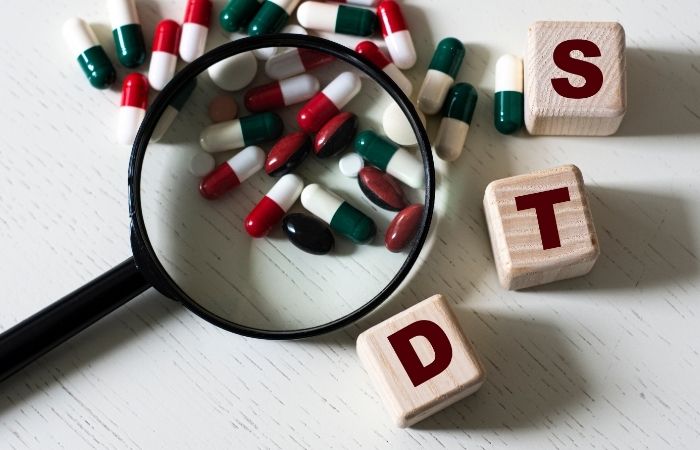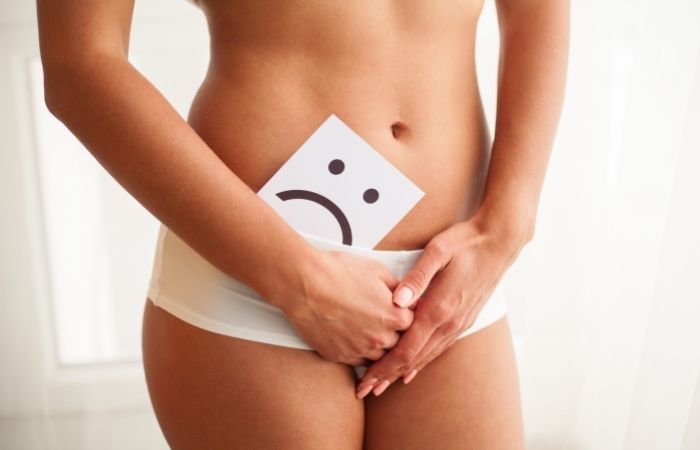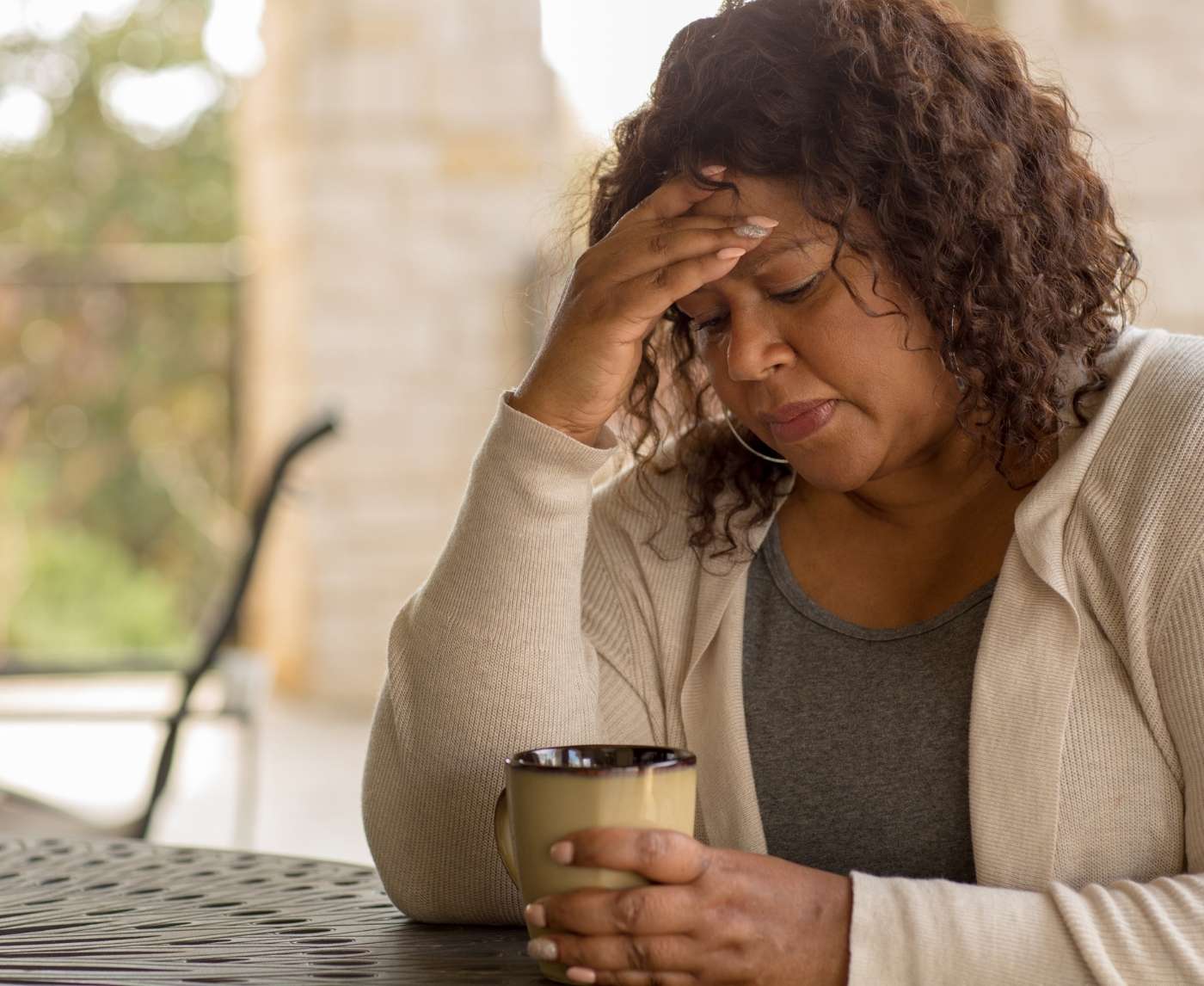Quick Answer: Yes, you can get an STD after menopause. Lower estrogen levels cause thinning of vaginal tissue, increasing the risk of tears and infections during sex. Condom use often drops post-menopause, while STI rates in older adults are rising.
Why STD Risk Doesn’t Retire With Your Period
Somewhere along the way, society decided that STDs were only a “young people” problem. Birth control messaging focused on pregnancy. STD awareness campaigns aimed at teens. And the myth stuck: once you stop menstruating, you stop needing to worry about infection.
That couldn’t be more wrong.
Sexually transmitted infections (STIs) don’t care if you’re postmenopausal. And in fact, they thrive in silence. Many women over 50 aren’t routinely screened for STDs. Some doctors assume they’re not sexually active. Many patients assume symptoms like pain, dryness, or discharge are “just menopause.”
Meanwhile, cases of chlamydia, syphilis, HIV, and HPV are climbing among older adults, especially those re-entering the dating pool after divorce or widowhood.
You can’t get pregnant anymore, but you can absolutely get infected.

People are also reading: Misdiagnosed and Ignored: How Medical Gaslighting Delays STD Treatment
Thinner Tissue, Bigger Risk
One of the biggest changes after menopause isn’t just the absence of periods, it’s what happens to the vaginal walls. When estrogen drops, the lining of the vagina becomes thinner, less elastic, and more prone to small tears or micro-abrasions during sex. This condition is known as vulvovaginal atrophy (VVA) or genitourinary syndrome of menopause (GSM).
Why does that matter? Because those tiny tears make it easier for infections to enter your system. Even a routine hookup can lead to burning, irritation, or, if an STD is present, transmission.
Increased friction + fragile tissue = higher vulnerability.
And here’s the kicker: older adults often don’t use condoms. The fear of pregnancy is gone, so the “why bother?” mindset takes over. But unlike birth control, condoms are your only protection against STIs. And when less lubrication meets less protection, the risk multiplies.
The Symptoms No One Talks About
Postmenopausal bodies feel different. But when those changes overlap with STD symptoms, it’s easy to misread the signs. Many women ignore or downplay things like:
- Unusual discharge (“Probably just dryness”)
- Itching or burning (“That’s menopause, right?”)
- Pain during sex (“Normal for my age”)
- Bleeding after intercourse (“Maybe just friction”)
But these can also signal chlamydia, gonorrhea, trichomoniasis, or even HPV-related changes. Vaginal changes after menopause make it harder to tell what’s “normal”, and that confusion delays testing and treatment.
If your provider brushes off these symptoms as “just hormonal,” push back. Ask for an STI screening. You’re not paranoid, you’re being proactive.
Your body is different now, but it’s still talking to you. Don’t ignore it.
The Quiet Surge of STDs in Older Adults
You’re not imagining it, STDs are rising among people over 50. According to the CDC, cases of syphilis, chlamydia, and gonorrhea have climbed steadily in older demographics over the past decade. And that’s just what’s being reported.
Here’s why it’s happening:
- Dating apps: More older adults are dating online, often with multiple new partners.
- Condom use drops: Pregnancy is no longer a concern, so condoms are often forgotten.
- Doctors don’t ask: Many assume older patients aren’t sexually active, so STI screening isn’t offered.
- Symptoms get misread: Postmenopausal changes mask the signs of infection.
The result? More exposure, more transmission, and more untreated infections.
Sex after 50 isn’t going away, it’s just going unspoken. And the less we talk about it, the more invisible these risks become.
Check Your STD Status in Minutes
Test at Home with Remedium7-in-1 STD Test Kit

 For Men & Women
For Men & Women Results in Minutes
Results in Minutes No Lab Needed
No Lab Needed Private & Discreet
Private & DiscreetOrder Now $129.00 $343.00
For all 7 tests
How to Talk to Your Doctor (Without Blushing)
You don’t have to walk into your doctor’s office and announce, “I think I have an STD.” But you do have the right to ask for full testing, even if they don’t bring it up first.
Here’s a script you can use:
- “I’m sexually active and want a full STI panel, including trich and HIV.”
- “I’ve noticed some changes and want to rule out any infections.”
- “I’d like to update my sexual health screenings, it’s been a while.”
And if your provider rolls their eyes, downplays your concern, or tells you “it’s probably just menopause”, that’s your cue to find a new one. Menopause doesn’t erase your right to be taken seriously.
Better yet? Skip the awkward office entirely and test from home. This at-home combo STD test is designed for fast, private results, no questions, no stigma.
What About Estrogen Therapy, Does It Help?
Hormone replacement therapy (HRT) can make sex more comfortable after menopause. It helps restore vaginal elasticity, increases natural lubrication, and reduces pain during intercourse. But it doesn’t make you immune to STDs.
HRT helps with symptoms, not transmission. If your partner has herpes, HPV, or gonorrhea, HRT won’t shield you. You still need barrier protection and regular screening.
That said, estrogen therapy might make infections easier to spot, because your body won’t be masking every symptom as just “dryness” or “irritation.” Think of it as one tool in your sexual health toolbox, not the whole solution.
Postmenopausal Dating Isn’t a Joke
Let’s stop pretending that older women stop wanting sex, or partners, after menopause. Whether you’re newly divorced, trying dating apps for the first time, or exploring with someone new after years of monogamy, this stage of life deserves joy and clarity.
The stereotype of the “sexless older woman” is not only wrong, it’s dangerous. It leads doctors to stop screening. It keeps women from asking questions. And it reinforces the shame that keeps infections spreading silently.
Dating after 50 should feel empowered, not embarrassing. That starts with access to real information, and real tools.

People are also reading: When Privacy Isn’t Possible: STD Testing in Rural Areas
Let’s Talk About Shame
Many postmenopausal women who test positive for an STD say the same thing: “I didn’t think I could get one.” Followed by: “I didn’t want to tell anyone.”
Shame is the real epidemic. And it thrives in silence.
There’s no age limit on sexual health. You’re allowed to ask questions. You’re allowed to be curious. You’re allowed to not know something, and learn anyway. The more we talk openly about STDs after menopause, the fewer people suffer in confusion and pain.
Protection Doesn’t Have to Kill the Mood
Condoms, lube, dental dams, these aren’t passion-killers. They’re confidence boosters. Knowing you’re safe lets you relax, explore, and stay fully present with your partner.
Use lube. Use protection. Use your voice. Say what you want, what feels good, and what makes you feel safe. And if a partner resists? That’s not sexy. That’s selfish. Protecting your body is never a turn-off, it’s the ultimate self-respect.
What If It Comes Back?
Some STDs, like chlamydia or trichomoniasis, are treatable. But that doesn’t mean you’re automatically protected going forward. Reinfection is common, especially when:
- Your partner wasn’t tested or treated
- You return to sex too quickly
- Condoms or barriers weren’t used consistently
It’s not about blame, it’s about balance. After treatment, wait 7–14 days before having sex again. And if your partner tested negative but wasn’t treated “just in case,” talk to them again. This is your body. You get to set the boundaries.
Check Your STD Status in Minutes
Test at Home with Remedium3-in-1 STD Test Kit

 For Men & Women
For Men & Women Results in Minutes
Results in Minutes No Lab Needed
No Lab Needed Private & Discreet
Private & DiscreetOrder Now $69.00 $147.00
For all 3 tests
HPV Doesn’t Retire Either
Human papillomavirus (HPV) doesn’t go away with menopause. In fact, some older women experience HPV reactivation years after first exposure, especially as the immune system shifts with age.
This matters because HPV can cause cervical, vaginal, and vulvar cancers. Even if you’ve been monogamous or celibate for years, reactivation can still occur.
That’s why pap smears and HPV tests should continue after 50. Talk to your doctor about how often you need screening, and whether your past results suggest higher vigilance.
How Long Should You Wait to Test?
If you’ve recently had a new partner or unprotected sex, here’s a quick timeline guide:
- Chlamydia & Gonorrhea: Test after 5–7 days
- Syphilis: Best accuracy after 3 weeks
- HIV: Test after 2–4 weeks, then retest at 3 months
- Trichomoniasis: Can be detected in 5–10 days
And if symptoms show up earlier? Don’t wait. Get tested right away. False negatives are rare but possible, so follow up if something still feels off.
You’re Not Too Old for Care, Connection, or Clarity
This isn’t just about disease. It’s about dignity. You’re allowed to have a sex life after menopause. You’re allowed to feel good, want touch, and expect safety.
If you’ve had a scare, or just want reassurance, take the step that helps you breathe again. This at-home combo STD test checks for multiple infections, fast and privately.
Menopause didn’t end your story. It just started a new chapter. And in this one? You’re informed, empowered, and in control.

People are also reading: I Thought It Was Just Dry Sex, 'Mia’s’ Story of Getting Trich on Her First Hookup
FAQs
1. Can you still get an STD after menopause?
Yes. Menopause doesn’t protect you from infections. Chlamydia, gonorrhea, syphilis, and HPV are among the sexually transmitted diseases that can still be transmitted through unprotected intercourse.
2. Why are postmenopausal women more vulnerable to STDs?
Vaginal tissue becomes thinner and more fragile after estrogen drops, increasing the risk of microtears that make transmission easier.
3. After menopause, do I still need to use condoms?
Yes, particularly when it comes to new or non-monogamous partners. Regardless of your fertility status, condoms continue to be your best defense against STIs.
4. Which sexually transmitted diseases are prevalent following menopause?
Burning, itching, discharge, pain during sex, and bleeding after intercourse may signal an infection, not just hormonal changes.
5. Can vaginal dryness lead to infections?
Indirectly, yes. Dryness increases friction and the chance of microtears, making infection more likely during sex.
6. Is HPV still a concern after 50?
Of course. Certain types of HPV can recur later in life and are linked to cancer. Screening must be ongoing.
7. How often should I get tested after menopause?
If you’re sexually active, especially with new or multiple partners, test at least once a year, or after any unprotected encounter.
8. Do doctors automatically test older women for STDs?
No. Many providers assume older adults aren’t sexually active. You may need to specifically request an STI panel.
9. Can I use an at-home test kit after menopause?
Yes.
10. What if I’m too embarrassed to get tested?
That’s totally normal, and why at-home options exist. This Combo STD Test Kit lets you check privately and quickly from home.
Before You Brush It Off, Protect Yourself
It’s easy to assume that STDs are for “someone else”, younger people, careless people, people having more sex than you. But infection doesn’t check your age. It checks for opportunity.
Whether you're dating, partnered, or newly curious, you deserve to enjoy intimacy with confidence, not confusion. Get tested from home with this doctor-trusted kit. No shame, no waiting rooms, just answers.
Sources
Menopause Increases Risk of Sexually Transmitted Infections – Clinical Advisor
Increased STI Risk After Menopause – NIH Study










